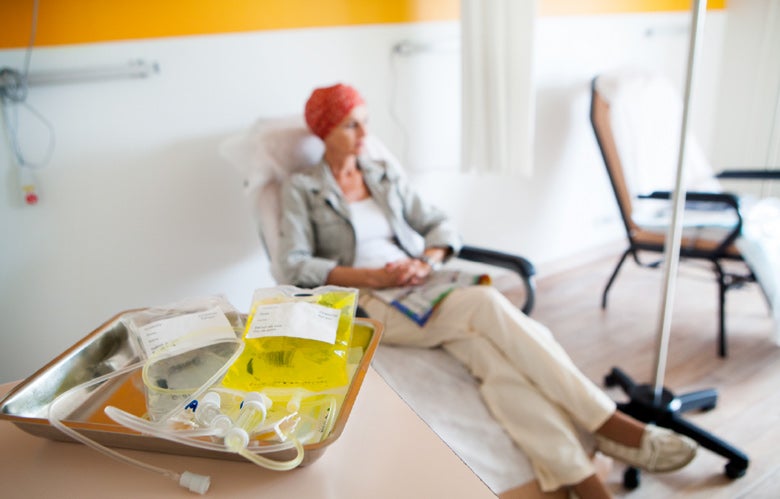It is often said that practicing medicine is an art as much as it is a science. In a utopia of health, we would have data from the most rigorous diagnostic and prognostic studies, randomized trials for every therapeutic and prophylactic intervention, and all clinical decisions would be evidence-based. In reality, however, we practice medicine in an environment far from utopia — in a world of heterogeneity and uncertainty. No other situation exemplifies this more than the current COVID-19 pandemic, wherein a novel coronavirus spilled over into humans causing a brand-new disease that spread throughout the world infecting more than 10 million people and killing half a million in its first six months.
Healthcare workers, researchers and scientists across the globe have made significant progress in our understanding of this novel coronavirus, SARS-CoV-2, and the COVID-19 illness it causes in such a short amount of time and remarkably under very stressful conditions. Here is an update on five research discoveries with significant impact on the clinical care of patients with COVID-19.
1. Rapid sequence analysis and data sharing to expedite development of diagnostic reagents and vaccines:
Within 10 days of the initial report describing a pneumonia of unknown origin out of Wuhan, China, the novel coronavirus had been sequenced and its genome was shared on the internet. Clinical researchers and pharmaceutical companies began developing diagnostic reagents and vaccine candidates immediately. According to the International Society for Infectious Diseases resource ProMED, the first diagnostic test was available on January 19th — just nine days after the genomic sequence was disseminated. Many more tests were developed and validated for clinical use in the following months with nearly 100 molecular tests currently authorized for use by the U.S. Drug and Food Administration (FDA). Production and testing of vaccines occurred on a similar timeline. As of mid-July, 163 vaccine candidates are being evaluated with 23 in clinical trials, three of which have initiated large-scale phase III trials. Without the technology to rapidly isolate and sequence the novel coronavirus and the selflessness to share the genomic sequence, the inability to identify and track infections could have led to greater spread and more deaths, and the capability to design vaccines would have been delayed.
2. Proning to improve oxygen saturation and reduce need for mechanical ventilation:
Evidence is accumulating to support early anecdotal reports that proning (the process of precisely and safely turning a patient from their back onto their abdomen) helps patients with COVID-19. A study published in JAMA Internal Medicine showed that prone positioning for one hour improved oxygen saturation in 19 of 25 patients with COVID-19 and severe hypoxemic respiratory failure. Fewer patients with improved oxygenation required intubation compared to patients who did not improve with prone positioning. Randomized trials are still needed to evaluate the efficacy of proning, particularly to determine whether it reduces mortality, but as a relatively safe physical maneuver, a trial of awake prone positioning is recommended for patients with persistent hypoxemia if intubation is not otherwise indicated.
3. Identification of coagulopathy markers and recommendations for thromboprophylaxis:
Early in the pandemic, patients with COVID-19 underwent a gamut of testing in an attempt to understand this new disease. One notable finding was elevated D-dimer and fibrinogen levels, which are more commonly associated with thrombotic complications including disseminated intravascular coagulation (DIC) and venous thromboembolism (VTE). Further, it became evident that abnormal coagulopathy markers were associated with admission to critical care units and increased mortality. This discovery led several hematology groups to recommend routine thromboprophylaxis at time of hospital admission for all patients with COVID-19 as well as careful monitoring and prompt treatment for sepsis-induced coagulopathy (SIC), DIC, and VTE. The pathophysiology of hypercoagulability isn’t yet fully elucidated, though tissue damage induced by a cytokine storm in these patients is a likely possibility.
4. New onset loss of smell or taste as a useful clinical pearl:
Many respiratory infections clinically mirror each other, and it is often not necessary to identify the causative agent in mild, self-limited illnesses. However, because of the severity of COVID-19 in some patients and the public health impact of the pandemic, diagnosing and tracking COVID-19 is paramount. When testing is limited, targeting that testing to patients most likely to have the disease may be critical. A few anecdotes about patients with olfactory and gustatory dysfunction led to inclusion of these questions in patient history and observational studies to evaluate the prevalence of these unique features. It is now clear that ageusia (loss of taste) and anosmia (loss of smell) occur in about 80 percent of patients with COVID-19. Since these symptoms are not common in other respiratory infections, ageusia and anosmia have become clinical pearls in the decision to test for SARS-CoV-2.
5. Effective therapies for severe cases:
While a cure for COVID-19 remains elusive, two therapies have shown promise for the most severe cases. In two randomized trials, the RNA inhibitor remdesivir shortened time to clinical improvement in patients hospitalized with COVID-19, however there is insufficient evidence to-date that remdesivir improves mortality. These data have led the National Institutes of Health (NIH) and Infectious Disease Society of America (IDSA) to recommend remdesivir for hospitalized patients with oxygen saturation (SpO2) ≤ 94 percent including those on supplemental oxygen, mechanical ventilation, or extracorporeal membrane oxygenation (ECMO). The second therapy recommended by the NIH and IDSA for patients with severe COVID-19 requiring supplemental oxygen is the steroid dexamethasone. In one large randomized trial, dexamethasone reduced 28-day mortality among patients receiving supplemental oxygen or mechanical ventilation.
BONUS discovery:
1. Elucidating the crystal structure of the SARS-CoV-2 spike protein:
In March, research groups from the University of Texas at Austin and the NIH published the cryo-electron microscopy (cryo-EM) structure of the SARS-CoV-2 spike protein. Because the spike protein is used to enter human cells, it is a key target for vaccines, therapeutic antibodies, small molecule therapies, and diagnostic reagents. Therefore, knowledge of its structure is integral to fighting this pandemic.
There is still so much we do not know about this novel coronavirus that will impact clinical management of patients with COVID-19 including the pathophysiology of severe disease, coagulopathy, and multisystem inflammatory syndrome in children (MIS-C). In addition, understanding the type and durability of immunity to natural infection will help guide vaccine strategies. Going forward, we must not forget that basic research in virology and microbiology is essential because microorganisms don’t just exist in our world — we live in theirs.



